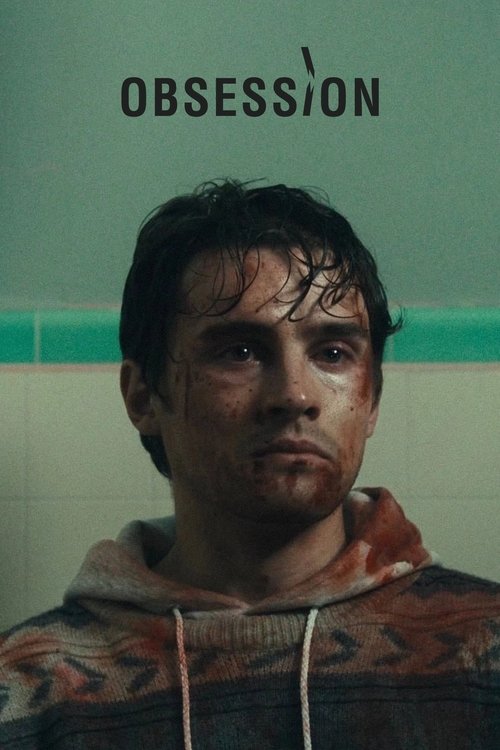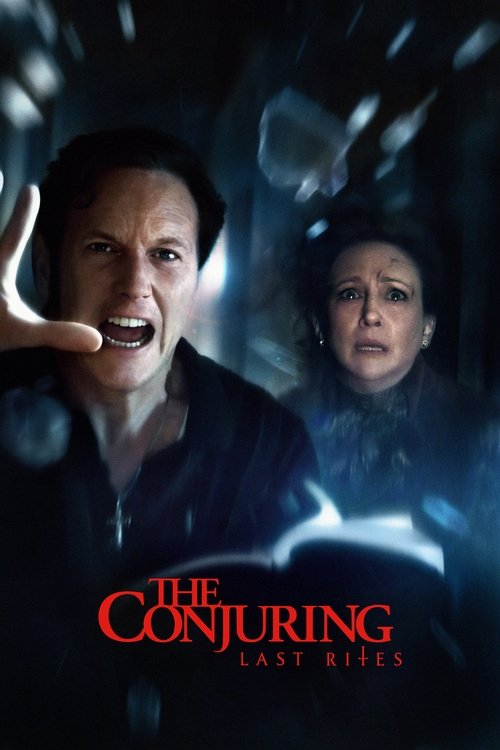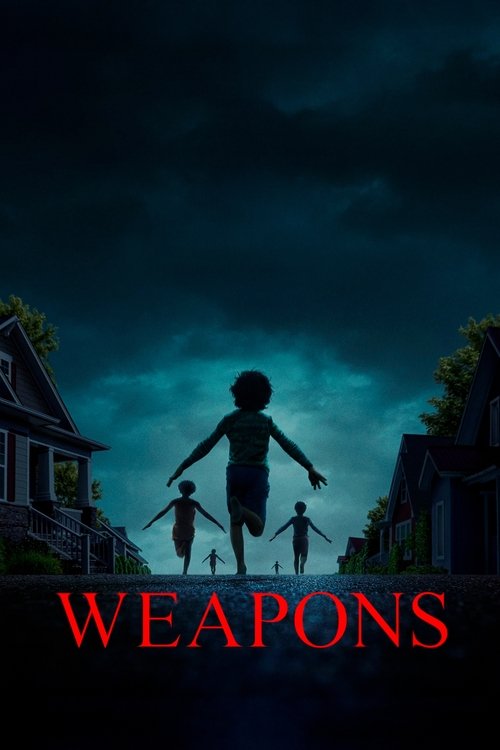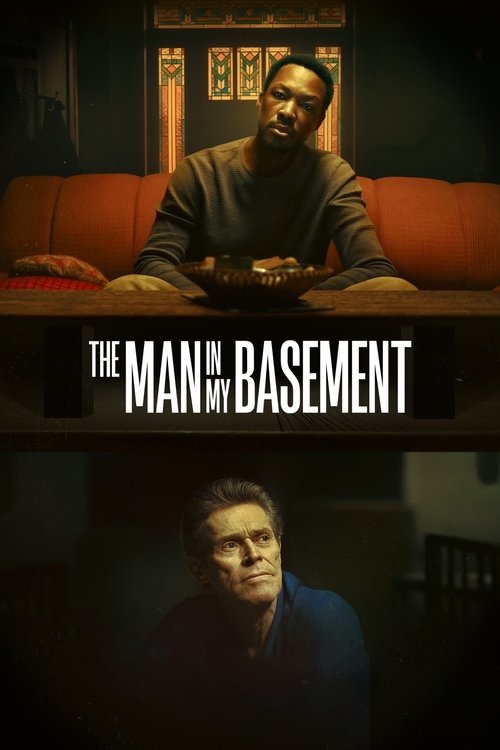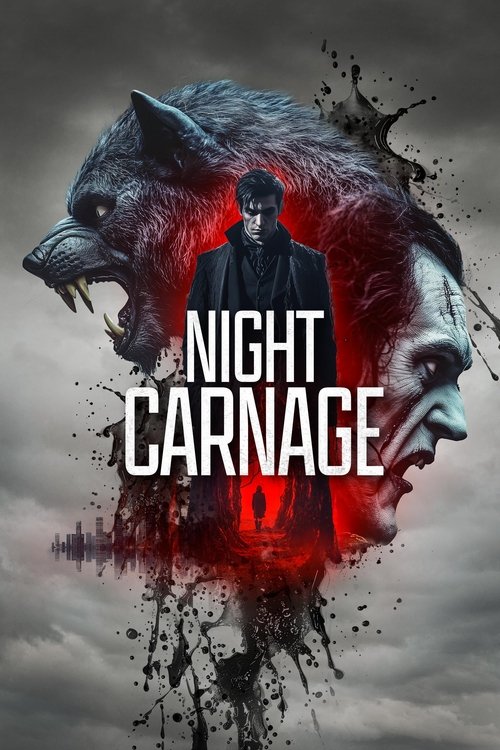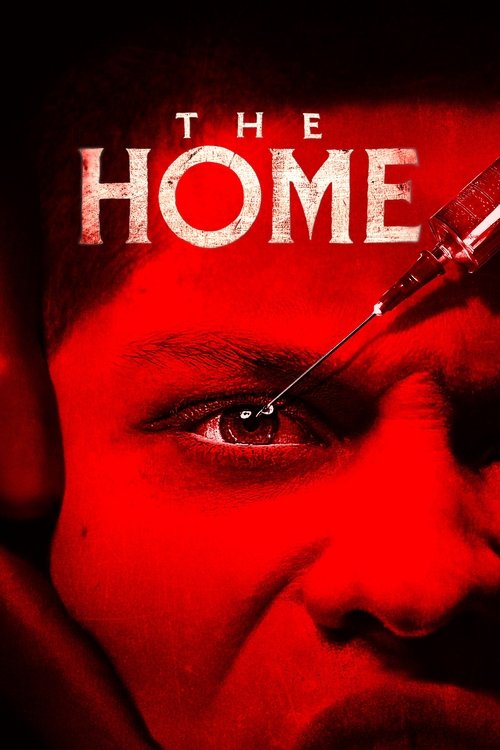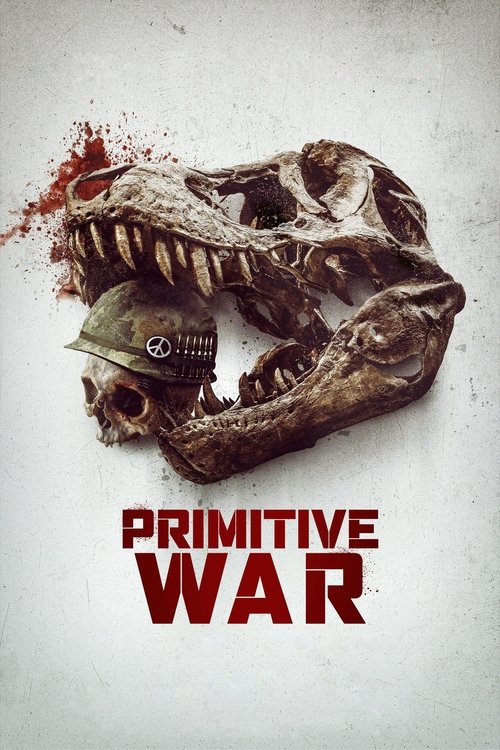
Ask Your Own Question
What is the plot?
On a rain-lashed evening Dr. Clive Riordan walks into the bedroom where his wife Storm is in flagrante with another man, Bill. Clive watches them, clenched and controlled, and after a brief confrontation he produces a handgun. He forces Bill out of the bed, drags him from the house and leads him to an old building he owns where he has fitted a secret chamber. Inside that room Clive places a heavy chain around Bill's wrist and bolts the other end to the wall, leaving Bill unable to move beyond the length of the restraint. Clive tells Bill he has known of Storm's repeated affairs and that he has been planning to silence her next lover; he intends to keep Bill alive while the police search, then, when the trail cools, finish him and dispose of the body in a vat of chemicals Clive has prepared to dissolve human remains.
Bill endures the first days in the cramped, windowless space. Storm's small dog, which follows Clive to the derelict building, slips inside and refuses to leave; the dog settles by Bill's side and the two form a fragile companionship. Bill trains the animal to pull the drain plug on the chemical tub -- the plug sits beyond the reach of his chained wrist -- so the dog becomes his only way to act against Clive's plan. For five months Clive hides Bill while the case of a missing lover circulates through local rumor and the police conduct their inquiries. The house where Bill is held remains unremarkable to neighbors, and Clive tampers with any obvious evidence, believing that keeping Bill alive until public interest fades will safeguard him: if investigators find suspicious traces, Clive can present Bill as alive and thereby deflect a murder charge.
Storm, frantic over the disappearance of both Bill and her dog, reports her suspicions to Scotland Yard and points an accusing finger at Clive. At the police station she declares that she fears Clive killed Bill, and, in the heat of her accusation, charges Clive with having killed the dog as well, mocking him as too cowardly to kill a man. Scotland Yard sends detectives to question Clive. During interrogation one of Clive's responses -- careless and spiteful -- betrays the truth that Bill is still alive somewhere, and, unnerved, Storm realizes that Clive means to finish what he started. She rings the Yard again and tells them to watch for Clive's car; she also hustles to intercept Clive before he reaches the old building.
Clive returns to the hidden chamber intent on carrying out his plan at last. He forces something into Bill's mouth and poisons him; the poison renders Bill unconscious and near death. Clive moves to the prepared tub of chemicals to dissolve the corpse, only to discover the vat is empty -- he miscalculated, or someone already removed the substances. For a moment his rage and composure collapse into panic. He abandons the site and goes to his private club, sitting as if waiting for the inevitable. Scotland Yard, having followed Storm's tip about his vehicle, arrive at the club and place Clive under arrest. At the police station detectives inform Clive that Bill is not dead from the poison; paramedics have rescued him and rushed him to hospital in critical condition. Clive faces charges and the fragile edifice of his plan begins to crumble.
While Bill lies in the hospital recovering from the poisoning, Storm goes to visit him. Their conversation unmasks Storm's personality: she speaks with cold calculation, revealing that she has always put her own desires above anyone else's, that she has no real remorse, and she tells Bill she will be leaving soon on a South American cruise with yet another lover. Her tone is detached; she is more distraught about the loss of her dog than she is about Bill's near-fatal ordeal. As Storm leaves the hospital ward, the dog, leashed by Storm for the visit, breaks free and bolts across the corridor toward Bill's bed, pressing itself against him and refusing to leave. Bill, alive though scarred, allows the dog to climb into the chair at his side; they remain together as Storm departs for her cruise.
Three miles away, in another part of town on a wet, treacherous night, Jennifer runs terrified down an empty street, fleeing a man wielding a knife. She staggers across an intersection as rain soaks her clothing, and a car plows into her; the force of the impact throws her several feet. Emergency responders arrive and rush Jennifer into an emergency room, where doctors work frantically to stabilize her injuries. She falls into a coma. Her husband Russell reaches the hospital and is told his wife is in critical condition. Detective Frank Page, an officer whose own life has been hollowed by a child's abduction years earlier, appears at the hospital to interview Russell; his questions carry a private ache and a persistent unease about the circumstances around the attack.
Jennifer awakens from the coma with total retrograde amnesia: she remembers nothing of the events leading up to the assault, she cannot recall the man who calls himself her husband, and she cannot find the face of her past in any mirror. Russell brings photographs and tells stories, reconstructing her life from pictures and documents: they were married, they had a home in an isolated, architect-designed house, and her parents died years earlier in a fire. Because Jennifer cannot remember her life, Russell becomes her nexus, and she depends on him to narrate what she cannot recall. The doctors declare she is fit to be discharged to home care and Russell transports her to the remote house they purportedly share.
As Jennifer heals physically, small flashes of memory haunt her: the throat of a man with a knife, the feel of being struck, the sudden shudder of the car at impact. Confronted by these fractured images and by inconsistencies in Russell's accounts, she grows suspicious. Photographs on the mantle around the house show Russell and Jennifer together, but as she examines them she senses that the images may have been altered. Her cellphone is missing, and Russell insists she left her job; her life, as Russell narrates it, seems to have been carved away from the world. When a stranger who claims to have information for Detective Page reaches out about the attack, Russell tracks him down, kills him, and buries the body in the backyard of the house. After that killing, Jennifer notices odd disturbances in the soil and a smell she cannot place, but she cannot prove anything and Russell deflects her questions.
As she starts to probe further, Jennifer learns that she is mostly reliant on a wheelchair because of lingering injuries and that Russell keeps keys and control over the house. The isolation becomes a prison. She spies on Russell on occasion and, in one attempt to escape memory loss through physical movement, hauls herself downstairs against his expectations to explore the house. When Russell tries to initiate intimacy, Jennifer pulls away, feeling a primal horror she cannot yet name. Detective Page persists in his own investigations, piecing together threads. He follows leads to Jennifer's parents' former home and finds their bodies inside; the house stands as a ruin of charred furniture and unanswered questions, and the corpses provide a new, grim clue that the violence surrounding Jennifer reaches further than the initial attack. Page's own history -- his missing daughter -- sharpens his focus.
Jennifer hooks into more concrete evidence while Russell is out of the house on errands. She sits at his laptop and discovers that the couple photographs have been doctored: faces have been spliced, sequences altered so that her life looks continuous with Russell's through time. She begins to retrieve memory fragments: flashes of being assaulted, an image of Russell's face with a savage expression. Those glimpses coalesce into a single terrible recognition: the man who calls himself Russell is not her husband at all. The man who struck her, chased her, and left her for dead is the man living in her house. She finds a new truth: the man posing as Russell is Ryan, a co-worker of the real Russell who has been infatuated with Jennifer and consumed by envy. Ryan has adopted Russell's identity.
Jennifer tries to flee, crawling toward the garage and a parked car, but Ryan returns unexpectedly and catches her. He hits her over the head, leaving her semi-conscious, and takes her back upstairs where he chains her to the bed, fastening metal to her wrists. When he later goes out for supplies, Nurse Masters -- a caregiver who had grown suspicious of "Russell" and had been aiding Detective Page by watching the house -- spots Ryan outside and confronts him at the driveway. He speeds away, leaving her terrified but alive. Jennifer, alone in the bedroom, fights against the restraints. She injures her foot in the struggle, fracturing it when she forces herself against the metal, but the pain does not stop her. After breaking free from some of the chains by working at them with a shard of metal, she drags herself into the garage and tries to start the car.
Ryan returns and opens the trunk to check on the corpse inside: the real Russell lies there, dead and concealed. Jennifer sees the body in the gloom and realizes Ryan murdered the actual man who had been her husband. Later police footage and interviews will show that Ryan killed Russell by striking him repeatedly and stuffing his body into the trunk; the blow that rendered Russell dead mirrors the way Ryan attacks and bludgeons others in his path of obsession.
Detective Page, closing in, arrives at the property intent on arresting Ryan, but Ryan strikes him across the head with a blunt object and leaves him unconscious. Now discovered, Ryan ties Jennifer to the bed with heavy rope and finally unburdens himself: he explains how he has always loved her, how jealousy drove him to hate Russell, and why he could not abide her being with another man. He says he might have killed her if not for her memory loss, implying he finds some perverse mercy in her inability to remember her attacker. He prepares to eliminate any witnesses. Jennifer, resourceful under agony, uses a lighter she finds on the bedside table to burn the ropes or the bindings nearby and escapes her restraints. She seizes a heavy vase and swings it, striking Ryan over the head hard enough to render him stunned.
Jennifer bolts from the house and runs toward the trees at the edge of the property. Detective Page, recovering from his blow, follows into the rain-soaked forest. Ryan draws a gun and aims at Jennifer as she flees through the undergrowth; Page tackles him just as he pulls the trigger. In the scuffle the firearm drops and Jennifer manages to snatch it; she points the weapon back at Ryan and fires, shooting him. The bullet ends the threat Ryan poses; he collapses among the roots and leaves, and Jennifer stands shaking, blood on her hands, while Detective Page calls emergency services.
After the events surrounding the shootout, statutory process follows. Investigators excavate the backyard and discover the buried body of the man Ryan killed earlier, the one who had contacted the police; they also recover the corpse in the trunk and confirm its identity as the real Russell. Forensic teams document the doctored photographs and other evidence of identity theft; statements and hospital records corroborate the sequence that led to Jennifer's amnesia and subsequent confinement. Ryan's patterns of violence are recorded in detail. The police bring charges that include multiple killings, kidnapping, and identity fraud.
Clive Riordan, meanwhile, has been in jail awaiting prosecution for the poison attempt and the chain of events that led to the exposure of Bill. At the hospital Bill awakens from his poisoned stupor. He learns that Clive attempted to kill him and had planned to dissolve his body in a chemical bath; he also hears that Storm visited, unmoved, and that she intends to leave on a South American cruise with another lover. Bill learns the dog broke free and found him after Storm left. He holds the dog in the hospital room and lets the animal lick the scars on his hand. Police interview Bill about his captivity and the months of confinement in Clive's hidden room; his testimony helps prosecutors build a case.
Ryan dies at the scene of the forest struggle, shot by Jennifer after Page tackles him and the gun falls to the ground. The coroner lists the cause as a gunshot wound inflicted during the exchange with the police and the victim Jennifer. The man Ryan had murdered earlier -- the stranger who approached Detective Page -- is found buried in Ryan's yard; investigators determine that Ryan killed him by bludgeoning him with a blunt instrument before interring the body under the soil. The real Russell is recovered from the trunk; his autopsy shows multiple blunt-force injuries consistent with being struck and then concealed. The deaths of these three men are tied to Ryan's jealous and obsessive behavior. The police file records show Clive did attempt to poison Bill, and his arrest prevents any further harm.
Months after the trial and the hospital stays, Detective Frank Page prepares to retire. He gathers boxes of personal effects, the old weight of his missing daughter pressing on him still, but the case involving Jennifer has given him a different kind of closure. Jennifer visits Page to thank him and to say goodbye. He hands her an envelope he recovered from the investigation -- a note written by the real Russell that Page found in Russell's office before the body was identified. Jennifer opens the letter in her car after leaving Page's house and reads Russell's words aloud to herself, the voice-over cadence reprising the lines her husband once wrote. The voice conveys intimate recollection: promises of love and small confidences. Jennifer drives away from the suburban house toward a future whose contours are uncertain but in which she carries the memory of what she has lost and what she has survived.
At the hospital Bill sits with the dog, looking at his scarred wrist where the chain once bit his skin. Storm boards a ship bound for South America, dispassionately setting sail while others watch from the quay. Clive sits in his cell awaiting sentencing, his plan unfulfilled and his life in pieces. Detective Page closes his files, walks out of the station with boxes under his arm, and Jennifer, reading Russell's letter, drives into the sunlight, the road ahead open and indeterminate, the last image of the film a woman moving forward after violence, the man who pursued her destroyed, and those who sought revenge and justice left to live with the consequences.
What is the ending?
At the end of Obsession (2025), Nikki's love for Bear becomes dangerously obsessive and violent, leading to a deadly confrontation. Bear survives but is left deeply traumatized, while Nikki's fate is sealed by her own uncontrollable obsession, resulting in her demise. The other main characters, Ian and Sarah, are caught in the chaos but survive the ordeal.
The ending of Obsession unfolds in a tense, escalating sequence of scenes that reveal the full horror of Nikki's enchantment and Bear's desperate attempts to escape it.
The climax begins as Nikki's obsession with Bear intensifies beyond romantic infatuation into violent possessiveness. Bear, who initially wished for Nikki to love him "more than anything," realizes the wish has unleashed a sinister force that controls her feelings and actions. Nikki's behavior becomes erratic and dangerous, targeting anyone she perceives as a threat to her relationship with Bear.
In a pivotal scene, Bear confronts Nikki in a secluded location, trying to reason with her and break the enchantment. Nikki's demeanor shifts rapidly from sweet and loving to menacing and unhinged. She physically attacks Bear, demonstrating the loss of her own agency under the spell. Bear narrowly escapes, but the encounter leaves him shaken and fearful.
Meanwhile, Ian and Sarah, Bear's coworkers and friends, become collateral victims of Nikki's obsession. Nikki views them as obstacles and threatens their safety, escalating the tension and stakes. Bear attempts to protect them, but the situation spirals out of control.
The final confrontation occurs in Bear's apartment, where Nikki corners Bear. The scene is charged with emotional and physical intensity, as Bear pleads for Nikki to regain control of herself. Nikki's obsession manifests in violent outbursts, and the struggle culminates in Nikki's accidental death--either by her own hand or as a result of the conflict with Bear.
Bear is left alive but profoundly changed by the ordeal. The film closes with Bear alone, grappling with the consequences of his wish and the loss of Nikki. Ian and Sarah survive but are visibly affected by the traumatic events.
This ending highlights the destructive nature of obsessive love and the unintended consequences of trying to control another's feelings. Each main character's fate is tied to the central conflict: Bear survives but is burdened by guilt and trauma; Nikki dies as a victim of the enchantment she cannot escape; Ian and Sarah survive but are caught in the fallout of Bear's wish and Nikki's obsession.
Is there a post-credit scene?
The movie Obsession (2025) does not have a traditional post-credit scene. Instead, its final moments occur just before the credits, ending on an ambiguous note with Anna starting therapy and hinting at possible change or continued struggle. The last scene shows Anna in a therapy session, where she asks about "rules" for therapy, then intensely says "how strange," leaving her future uncertain. There is no additional scene after the credits roll.
The ending is designed to be open-ended rather than providing a separate post-credit teaser or epilogue. The narrative closes with Anna seemingly trying to move on from her traumatic past and destructive cycles, but the final expression suggests complexity and ambiguity rather than closure.
How does Bear's wish affect Nikki's behavior?
After Bear makes a wish for Nikki to love him more than anything, she becomes infatuated with him. Initially, their friendship blossoms into a romance, but Nikki's love quickly turns into an obsessive and dangerous fixation. She becomes overly dependent on Bear, waiting for him constantly and reacting angrily if he tries to spend time with others.
What triggers Bear's decision to make the wish?
Bear's decision to make the wish is triggered by his long-standing unrequited love for Nikki. Despite being close friends, Bear has never mustered the courage to express his feelings to her. Frustrated and desperate, he uses a wishing willow to make his wish, hoping it will change their relationship.
How does Nikki's transformation affect her relationships with others?
As Nikki's obsession with Bear grows, she becomes a violent physical threat to anyone who isn't him. This transformation strains her relationships with others, including Bear's friends and possibly her own friends and family, though the latter is not explicitly detailed in the available information.
What internal conflict does Bear face as a result of Nikki's transformation?
Bear initially welcomes Nikki's newfound affection but soon finds himself in a conflict. He struggles with the realization that Nikki's love is not genuine but rather a result of the wish. This forces Bear to navigate a situation that is both desirable and terrifying, as he tries to reconcile his feelings with the reality of Nikki's obsessive behavior.
How does Bear's character evolve throughout the story?
At the beginning, Bear is portrayed as a shy and sweet guy who is unable to express his feelings to Nikki. As the story progresses and Nikki becomes increasingly obsessed, Bear is forced to confront the darker aspects of his wish. He evolves from being hopeful and romantic to being fearful and desperate to escape the situation he has created.
Is this family friendly?
Based on available reviews and descriptions, Obsession (2025) is not considered family friendly and is best suited for mature audiences. The film is a horror feature that explores the dark consequences of a supernatural wish, blending unsettling tension with moments of dark humor. While detailed parental guidance ratings are not yet available, the film's content and tone suggest several elements that could be objectionable or upsetting for children or sensitive viewers:
- Intense Psychological Horror: The central relationship devolves into obsession and emotional manipulation, with scenes depicting increasingly disturbing and controlling behavior. The film maintains a sense of dread and discomfort throughout, as the object of affection becomes dangerously fixated, leading to a tense, claustrophobic atmosphere.
- Emotional Distress: Characters experience significant internal conflict and emotional pain. There are moments where the protagonist feels trapped and overwhelmed by the intensity of the situation, which could be distressing for viewers sensitive to themes of coercion and loss of autonomy.
- Potential for Violence: While explicit violence or gore is not detailed in current reviews, the escalating tension and the horror genre context suggest the possibility of frightening or intense scenes, including threats, confrontations, and a pervasive sense of danger.
- Themes of Forced Love and Control: The narrative revolves around the horror of having one's deepest romantic wish granted in a way that strips away genuine consent and free will. This exploration of unhealthy relationships and the consequences of magical coercion could be unsettling, especially for younger or more impressionable audiences.
- Dark Humor and Unease: The film uses humor to highlight the absurdity of the situation, but this humor is often paired with discomfort, creating a tone that may confuse or disturb viewers expecting a straightforward comedy or light romance.
In summary, Obsession (2025) is a horror film with strong psychological and emotional intensity, focusing on the terrifying side of wish fulfillment and obsessive love. It is not appropriate for children, and sensitive viewers should be prepared for themes of control, emotional distress, and potentially intense or frightening sequences. For specific content details (violence, language, etc.), official parental guides or certifications are not yet available, but the film's premise and execution clearly position it outside the family-friendly category.

